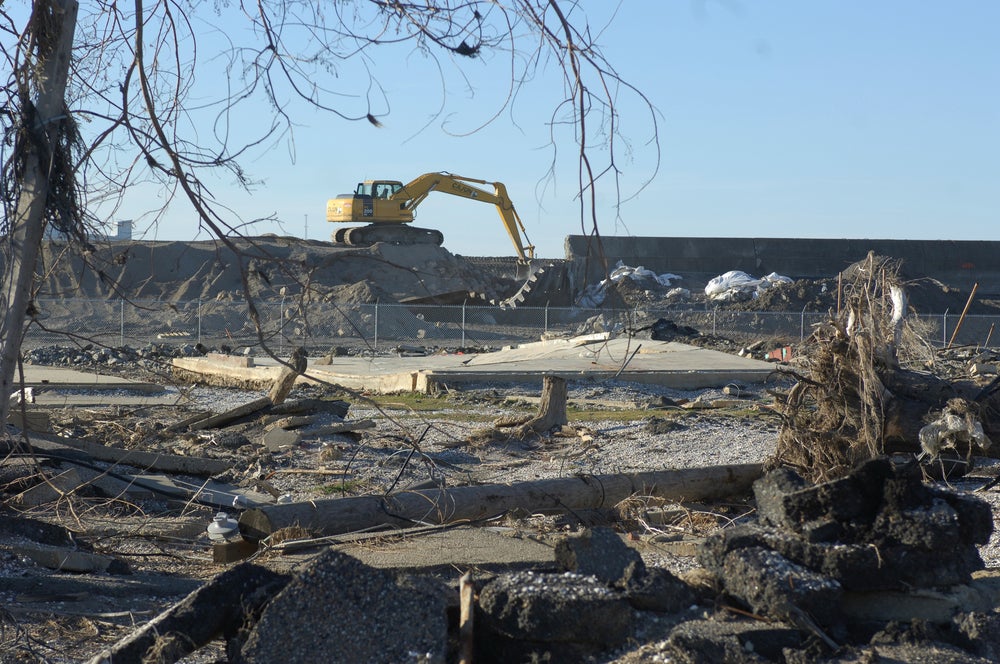In May, the US National Ocean and Atmospheric Administration (NOAA) predicted that 2024 would be the busiest Atlantic hurricane season on record.
As we enter the second half of hurricane season, which occurs between June and November in the Atlantic Ocean, this prediction has so far fallen short, with the number of major and named storms falling below average for the time of year. But this does not mean it’s time to relax.
Hurricane devastation
New Orleans knows all too well the devastation that a hurricane can bring. Hurricane Katrina in 2005 decimated the city, killing 1,392 people and causing estimated damage of at least $125bn.
Since then, the city has taken great steps in its climate adaptation, including government policies and community-led projects. As climate change increases the likelihood and severity of hurricanes, and expands the area they can develop in, more communities will need to invest in climate adaptation.
Landmark climate adaptation policies
After Hurricane Katrina and the 2010 Deepwater Horizon oil spill, New Orleans implemented a large-scale coastal protection program.
Louisiana is implementing adaptation and nature-based solutions across the entire state. In New Orleans, billions of dollars have been spent creating new marshland and diverting river sediments to slow down coastal erosion. Multiple large levees and river embankments have been constructed to protect the low-lying city.

US Tariffs are shifting - will you react or anticipate?
Don’t let policy changes catch you off guard. Stay proactive with real-time data and expert analysis.
By GlobalDataSo far, the projects have reduced the risk of floods and land loss. The city has not been hit with a Katrina-sized hurricane to test the protection levels offered by the coastal adaptations, but the severity of the risk is clearly displayed in Louisiana’s funding.
Diminishing support from US Army engineers for planning and design is forcing local governments to look into ‘nonstructural’ flood projects. This means projects like elevating homes off the ground or buying out the most vulnerable residents. Money from BP after the Deepwater Horizon settlement is still supporting the structural coastal reconstruction projects at present.
Resilience in Gentilly
New Orleans named the neighbourhood of Gentilly its ‘resilience district’. The rebuilding process in this neighbourhood incorporates precise and direct storm-resistant designs to protect against possible future disasters. The use of urban development water management like drainage improvements will help reduce flood severity.
The Mirabeau Water Garden is one of the landmark projects in the neighbourhood. Increasing green spaces in an urban area allows for increased water drainage. Construction began on the Mirabeau Water Garden in December 2023.
Gentilly and the site of the new garden is close to the banks of the Mississippi, so would be one of the first sites hit if river banks burst. The water garden will cover 25 acres of land and is said to be able to hold 10 million gallons of rain and storm water. Furthermore, the garden will be used as a community and education centre, strengthening the knowledge of storm resistance in the community.
Community adaptation and solar panels
Beginning as a response to the Covid-19 pandemic, Feed the Second Line is a New Orleans-based non-profit that supports the community. One of its projects is called ‘Get Lit Stay Lit’ and funds the implementation of solar power panels at restaurants across the city.
The hope is that if a storm occurs, the restaurants can remain in operation and function as shelters for the community.
The idea for solar panels came from one of the founders of Feed the Second, Devin De Wulf. In the wake of 2021’s Hurricane Ida, De Wulf was able to stay at home and support his neighbours thanks to the solar panels installed on his home.
The solar panels installed at restaurants can power microgrids and allow people to watch the news, charge medical devices, and keep fridges running to stop food spoilage.
Hurricane free years and power outages
No hurricane has hit New Orleans since the initiative began in 2022, but those restaurants that are part of the program have been able to keep functioning in power outages.
New Orleans demonstrates the wide range of climate adaptations that are possible. There is a growing need to adapt as natural disasters like storms are becoming more common and severe. Funding for physical defences like reconstructed coastlines and water gardens will hopefully limit damage to the city. Community projects like those carried out by Feed the Second Lines are examples of projects adapting to the community.









